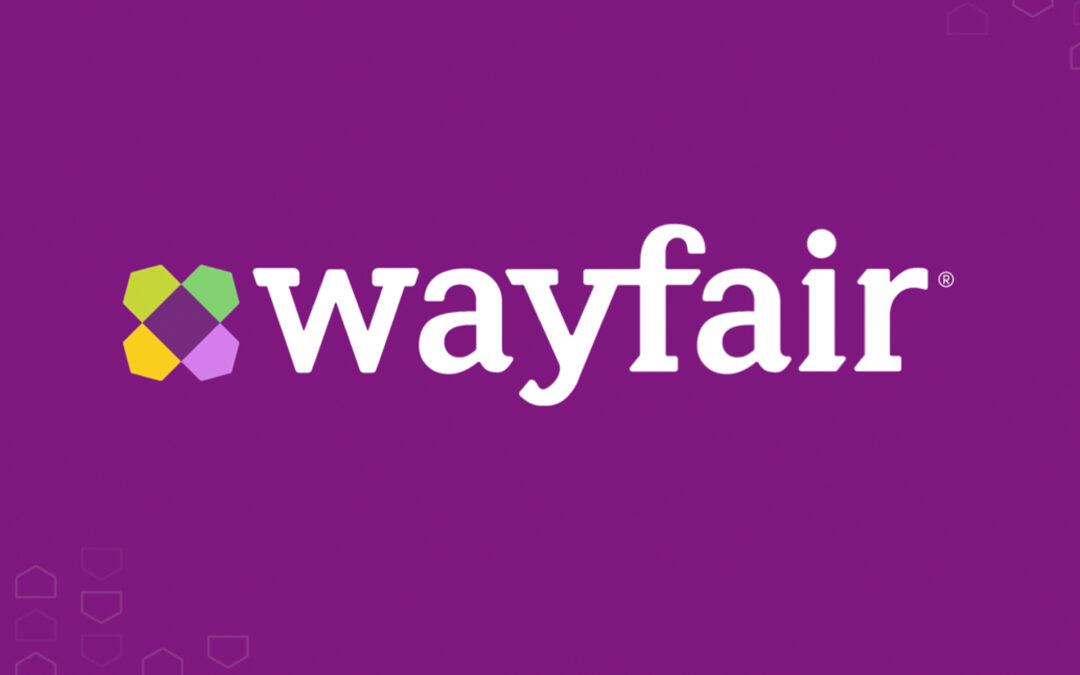Although the advent of ChatGPT has gotten much attention lately, the impact of AI on retailing is ongoing and has a lot of potential if addressed from a business perspective.
While conversations of the negative potential of AI have influenced the conversation, the recognition that AI is, effectively, an application of statistical analysis, is among the responses that have helped moderate initial concerns. Even if that summary is a bit simplistic, calmer perspectives have resulted from the dissemination of the errors that ChatGPT has made when asked to do more than the technology can, at least at this point.
In terms of application, more people recognize that AI has been working away steadily for years now, if not as conspicuously. In the retail space, AI has been integrated with pricing software and self-checkout technology for some time, allowing for rapid shifting in prices under market conditions online and, to a lesser extent, in store. In self-checkout, AI has been used to watch for bad actors who might bag some or all of their shopping after evading the barcode reader. AI can look at and compare actions across a wide database and not only learn what tricks are being tried out there but, when properly integrated into a security system, figure out when variations on those maneuvers are employed.
In terms of store operations, AI-assisted security software can help store managers deal with self-checkout problems. For example, when paired with loyalty card-generated information, the security system can help determine whether an activity is more likely to be criminal or accidental. If it can access a customer database, such as those attached to a loyalty card program, the system can review that information to see if a given customer has many, few or no incidents of reader avoidance. Then, store policy can kick in and management may determine that the customer should be asked to rescan certain items or that the incident is best ignored in accordance with good customer relations.
The example is one that illustrates a critical consideration when it comes to AI and its capabilities in that it should inform rather than determine what actions a business takes.
In a whitepaper, Guy Cohen, chief product officer at marketing platform Skai, noted that generative AI already is having an impact that will drive daily efficiency improvements allowing marketing professionals to streamline their workflows. As such, they are free to spend more time optimizing strategies and boosting their overall performance and return on investment. Early adopters, he stated, already leverage generative AI technology for creative tasks, such as producing images, text, videos, and taglines. As generative AI becomes more prevalent, publishers and technology vendors will integrate advancements into their existing tools to augment operations, accelerating and refining routine tasks while driving innovation and leading the way to novel opportunities.
In the longer term, generative AI will involve consumer research, purchasing behavior and interactions. The effect could be polarizing, Cohen warns, as it represents a shift in how people have traditionally shopped, with some consumers developing preferences for human interaction and others AI-generated results or some combination. Businesses will have to find the right mix of automated and human functions as they reach out and entice consumers. Yet, even as companies figure out just what AI might mean to them, new applications of artificial intelligence are emerging in the marketplace.
Hexa
For example, Amazon has tapped Hexa, a 3D visualization platform, to bring AI into play to its own purposes. With the technology, Amazon marketplace sellers can access Hexa’s proprietary immersive operating system to create and display applicable 3D images, immersive 360 viewing, virtual try-on capabilities, and augmented reality content on product pages.
Hexa is working with Amazon Web Services spatial computing team and amazon.com imaging teams are working with Hexa to establish a workflow that will allow marketplace selling partners to turn 2D into 3D whatever their experience with 3D or other forms of augmented reality. Hexa characterized the new workflow as an accessible process for all Amazon selling partners. With an Amazon Standard Identification Number, marketplace sellers can access Hexa’s content management system and convert as few as one image into a high-fidelity 3D model with AR compatibility, and, of course, they can convert more.
Yehiel Atias, Founder and CEO of Hexa called the recent deal an expansion of an established partnership. In terms of the photographic conversion from 2D to 3D, he said, AI’s role is in “pre-processing, getting the images ready for reconstruction, processing the images for construction and post-processing to make sure that the product was produced in the desired quality.”
As such Amazon can give its seller partners the means to build a more vivid and engaging presentation. Hexa, for its part, has been forging a relationship with the retailer for some time.
“Hexa has been building this technology over the past five years, and we have been working with Amazon over the last 24 months,” Atias said.
In application, the conversion isn’t simply a technical feat, but a means to an end and a tool. As is often the case with AI-invested technology, the idea is to free people to bring in the human artistry rather than diminish their contributions.

Yehiel Atias, Founder and CEO, Hexa
With a combination of AI-powered technology and human artistry, Hexa helps brands and retailers create, manage, [and] distribute 3D models that can be used for a variety of use cases, including packshots, 3D models, AR experiences, lifestyle photos, 360-degree view, promotional videos, etc. By creating digital twins of tangible objects with as little as one input, that is a photo or CAD file, we enable companies to extract the most value from their 3D content.
– Yehiel Atias, Founder and CEO, Hexa
“With a combination of AI-powered technology and human artistry, Hexa helps brands and retailers create, manage, [and] distribute 3D models that can be used for a variety of use cases, including packshots, 3D models, AR experiences, lifestyle photos, 360-degree view, promotional videos, etc.,” Atias said. “By creating digital twins of tangible objects with as little as one input, that is a photo or CAD file, we enable companies to extract the most value from their 3D content.”
Businesses can use the Hexa technology “pretty much everywhere, online and offline. For online customers like Amazon, we create 3D images used in VR, AR, and 360-degree applications. While offline, brands use our 3D images as virtual products to display in stores, which saves on inventory costs,” he said.
Atias says retailers using Hexa 3D imaging enjoy substantial advantages.
“This technology allows merchants to optimize the entire funnel of the purchase: More people will view the product, more people add to cart, more people will engage with the product,” Atias said, adding. “It will also reduce the return rate of purchases.”
Amazon chose Hexa because the company needed a partner with the infrastructure to service thousands of sellers while creating 3D assets for them at scale, handling tight timetables and providing quality technology at an affordable price. Plus, Hexa can accommodate any product needed from furniture to jewelry to apparel, Atias said.
The company isn’t limiting itself to one initiative.
“Over the last 24 months, we have been working with several parties within Amazon,” he said. “Due to an NDA, we can’t disclose any additional details. Macy’s, Logitech, Unity, and Crate & Barrel are also Hexa customers but we cannot disclose the specifics.”
Newegg
AI application has facilitated innovation at Newegg Commerce, with housewares and home furnishings as the specific target. The company is using artificial intelligence to fashion a newly launched Home Showcase, which is the company’s just-introduced interactive online shopping experience for home goods. Newegg wants customers to find inspiration as they are enticed to shop, with AI acting to improve the visuals and descriptions of the available products.
The Home Showcase landing page depicts the home departments as rooms in a two-story house. By clicking any of eight room icons, shoppers get connected to assortments of office, kitchen, living room, bathroom, gaming room, bedroom, garage and yard products.
The showcase serves up products as a curated product list. The recommended products include top brands offered along with deals and room-specific photos set to give consumers ideas about what might work in their own homes.
Newegg has employed Stable Diffusion AI to improve product photos and illustrate features for customers, and ChatGPT to provide direct, informative product descriptions and text on quick view pages.

Newegg Home Showcase
Andrew Choi, Newegg director of brand marketing, said gamers and system builders are always the company’s core customers but that it continues to pursue opportunities to build sales outside their best-established product categories and with shoppers who might not know such products are available among the e-tailer’s offerings.
“Home Showcase allows us to display our products and categories to current and new customers alike,” Choi said, and added, “We developed this to reach both existing and new customers. We expect that there are shoppers looking for the products we sell through Home Showcase who aren’t aware we carry a selection of those products. We’re using Home Showcase to merchandise our wide variety of products for the home. We’re also providing existing customers a platform to help drive inspiration and discovery shopping for their game and office rooms at home.”
Right now the AI functionality comes into play modifying product images and removing image backgrounds, replacing them with relevant lifestyle backgrounds when users hover over images, and not only that.
“Product descriptions are optimized by ChatGPT in Quick View, an abbreviated product listing,” Choi says. “We’re continuing to evaluate how we can use AI technologies throughout our company to improve our customer experience.”
The process of working with and figuring out how to use AI is an ongoing journey, one which Newegg recognizes is just getting started.

Andrew Choi, Director of Brand Marketing, Newegg
Product descriptions are optimized by ChatGPT in Quick View, an abbreviated product listing. We’re continuing to evaluate how we can use AI technologies throughout our company to improve our customer experience.
– Andrew Choi, Director of Brand Marketing, Newegg
“We are focused on providing new and existing customers with a new way to shop and browse our site and engage those looking for a more visual e-commerce experience without compromising the power of our site’s filtering capabilities,” Choi said. “Not all customers like to use our standard navigation tools to drill down to the category they want. Home Showcase also provides a new way to group categories that pertain to specific rooms or spaces at home.
We also want to showcase our vast product mix and brands outside of PC hardware.”
Choi said that the showcase initiative is a dynamic approach to the home category.
“We’re actively growing the home segment and constantly adding more products, brands and promotions. With Home Showcase, we’re able to more easily show categories like smart home, home appliances, fitness and furniture,” Choi said.
Within the company, the showcase initiative encouraged Newegg to fix attention on home categories and demonstrate a commitment to advancing them while making a statement to existing, new and potential customers that Newegg is a great online destination for shopping for home products.
“As we continue to focus on the tool, we hope to add more brands and products,” Choi said. “We plan to promote Home Showcase on a wide variety of marketing channels and are currently featuring it on our desktop homepage.”
As Applied
The application of AI will continue to reinvent how business is done. David Lucatch of Liquid Avatar is already using AI in creating identity wallets for the next iteration of the Internet, Web 3.0, in which people will control their identities and what information they are willing to share with websites they access in accordance with developments in privacy laws and guidance coming into effect.
Although Liquid Avatar is a technology company, Lucatch isn’t an advocate of AI for AI’s sake. He suggests that those who become enamored first of the technology may be looking at it the wrong way. AI is a tool and should be applied where businesses can make a solid case for its implementation.
“What do you want to achieve?” he asked. “What is the goal? If you don’t start out with the goal, then it’s hard to work backward to say what technology is going to be useful.”
In assessing AI, Lucatch said an analogy is useful, “Artificial intelligence can take a firehose of data, big data, and, if properly tuned, make it into small garden hoses of data.”
As such, big data applies to specific tasks. Artificial intelligence can be “tuned,” said Lucatch, by setting up specific parameters or employing machine learning, which is a more robust way to tailor data to meet a specific need, and even learn from results and become more sophisticated in refining information to necessity. However, Lucatch said providing solid parameters can be sufficient in many business AI applications.
In the case of digital identity, Liquid Avatar’s specialty, Lucatch and his colleagues look at specific factors.
“Today, our system looks at biometrics and verifying a device, and that’s very simple,” he said. “Biometrics is using facial recognition to create a facial map which is in compliance with privacy governance rules. We don’t store the picture long term. We just store the data around the face. Then we verify that the device is yours. That’s very simple technology, sending an SMS and confirming back that the information was received to that device. The third thing we use is artificial intelligence to verify a simple self-attested question: How old are you? Based on your answer, we use artificial intelligence that looks at the original biometric image you gave us and the data around it and predicts how old you should be within a very narrow range. If you say I’m 15 and you’re actually 50, it’s going to give you a very low confidence score. It’s going to say, that doesn’t match. So artificial intelligence can be used to confirm information in the case of digital identity.”
Because AI can review a lot of different data points quickly, including the effects of aging, it can more readily discern if the claim is realistic and, so, provides another means of ensuring whoever needs the information is dealing with the person who matches the digital identity. And it can do so online or in the metaverse, where Liquid Avatar is operating a virtual cafe.
“We can use artificial intelligence to tune large swaths of information into usable garden hoses of information relevant to a subject matter,” he says.
“We have created inside of our metaverse as a demonstration a fictitious coffee brand called Fluffy Bunny. So you can come in and ask the barista questions about coffee, and we’ve taken large swaths of information and tuned them and prompted them to only talk about coffee and also insert, where necessary, information about our Fluffy Bunny coffee. The reason we’ve done that is because it’s simple to understand coffee. It’s a very benign subject. If you ask it anything about coffee, it will give you an answer about coffee and it will prompt you in most cases to create an action with the Fluffy Bunny coffee company. If you ask about motorcycles, it will tell you that’s a subject that it knows nothing about. So it only knows coffee, coffee brands and a bunch of search parameters around coffee. We have tuned that large pipeline of information to come down to a garden hose that is focused on a particular subject matter.”
In commercial use, he notes, a business can create a customer service functionality or a virtual subject matter expert that prompts consumers to click on a button and go to a store. “You can have a sales rep standing, who doesn’t eat, doesn’t sleep, doesn’t go to the bathroom, doesn’t take vacation 24/7 to talk about your particular product or product groups and then prompt someone to another non-player character standing there that could be a link to your store,” Lucatch said.
When employing AI, a character can stand in for a live sales or customer relations person, but one that isn’t paid by the hour. Not that human beings would be ruled out of the equation. As already exists with chatbots, an AI character can engage consumers, but it can do so with more ability to respond.
David Lucatch, President, Chair and CEO, Liquid Avatar
You can have a sales rep standing, who doesn’t eat, doesn’t sleep, doesn’t go to the bathroom, doesn’t take vacation 24/7 to talk about your particular product or product groups and then prompt someone to another non-player character standing there that could be a link to your store.
– David Lucatch, President, Chair and CEO, Liquid Avatar
AI has the further potential to bring more specifically relevant information in the course of a conversation as parameters or machine learning direct how to present it. In the meantime, the business is learning about the person it’s engaged with. The business system can use that information in the specific interchange and as part of its business intelligence initiatives. It also can, at a designated point, shift the potential customer off to a human agent to further the transaction if it so chooses.
Yet, Lucatch returns to the point that, more than understanding the technology, understanding just what can be done with it in the business application, “The devil is in the details,” he says.
In the case of Liquid Avatar, the move away from compiling information about people for purposes of identification and to consumers owning their identity brings an opportunity that is supported by the technology.
“The future of identity is based somewhat on AI and ML for decentralized identification,” he says. “Business intelligence will use artificial intelligence and machine learning to understand more and more data and not just in taking it in but in doing something with it. You’ve got to think about how AI and MI will help you from an everyday business perspective.”
In practice and, at this point in the process, the best course may be to see where AI can help then find a provider that has developed an application in the correct realm that provides a solution that applies to the business case.
“Get something that’s boxed and move on,” he said. “What is the question and find people to help you answer that question. The question should be what value does it provide for my business if I use this technology? And is it going to make me faster, cheaper, better without sacrificing quality.”
In practice and, at this point in the process, the best course may be to see where AI can help and then find a provider that has developed an application in the correct realm that provides a solution that applies to the business case.
Jordan Brannon, president and CEO of marketing agency Coalition Technologies said AI can be both foundational and incremental in its application depending on how it’s applied.
For AI to be foundational, the data access has to be large in scope and good quality or the foundation will be made of sand.
Coalition, in applying AI, is determined to ensure input is of the right quality. Data is an important resource and has to be tapped in the right proportions.
“As an agency on the marketing front, one of the strengths that we are intending is in the aggregation of data and data management, which is that the data is good,” he said, then continued: “We can leverage AI more broadly and plan simultaneously. We’re trying to leverage data sets in such a way that learning in whole becomes beneficial to learning on an individual basis. If you are a smaller business or have access to less data, then you are going to be in a situation where the value of AI is diminished unless you have a platform or a partner, maybe something like an Amazon, that allows a broader access or is going to share data in some format with you.”
Access to quantities of data is important given AI’s job to parse large volumes of data based on parameters or association with machine learning to provide material relevant to the task at hand. It’s critical that AI is given clean data, which can be defined as that has been scrubbed of incorrect, corrupted, incorrectly formatted, duplicate or incomplete data.
The use of clean data is the foremost consideration when it comes to getting the best results from AI applications. So even ChatGPT, the Bing tools, and those functions Microsoft and Google are creating have been subject to output challenges based on some amount of poor quality data, Brannon said. It’s a significant problem, and companies who are getting involved with AI should recognize that they have to deal with the issue.
“You have companies that have billions of dollars in funding and valuation staking their futures on AI, and they are still getting bad output based on bad data,” Brannon said. “If you are a smaller company, you are going to have to expect and assume that some of that is going to be happening to you. So you should understand the importance and significance of it especially as you build in core dependency on AI tools and resources for your team or for your clients. You want to make sure you get as close to perfect as you can if you are going to be successful with the output.”
AI Outreach
When it comes to marketing, Coalition is using AI today primarily in personalization to provide value given the expense otherwise. The more personalized marketing content is the better in theory. However, the investment in labor can be excessive without the assistance of automation to deal with slow, mundane elements of the work.
“The problem is there is a diminishing level of return when that is executed by people and people alone,” Brannon said. “A solid AI tool allows you to create this more dramatic personalization of the experience, of the contact, of the interaction where, from a marketing perspective, you see a foundational change in the value of what we’re doing.”
Even as they hit the market, he said, commercially ready AI tolls are not necessarily effective in extracting the right data on their own, so Coalition has been developing capabilities itself.
Right now, most of the commercially ready AI tools today are not effective in surfacing personalization data on their own.
“Where we would like to go and we have some projects beginning to take us now is to where, with the proper library of assets, we can have something that feels very interactive, customer service-forward, that helps guide dynamically the content experience from top of the marketing funnel to bottom,” he says. “In a hypothetical example, we feed data on about two million U.S. customers scrubbed for privacy within verticals and look at performance of different types of email marketing, different types of ad sets, at some of the assets competitors are using inside of those same categories, and then we’re using AI to create some fairly granular and personalized campaigned based on some of the shared group things we’re seeing inside of that data, executing personalized campaigns that would have taken thousands of man hours in a way that wouldn’t be functional.”
Over the next few months, Brannon expects rapid refinement in AI application. Among its areas of interest, Coalition is looking at implementations that build team effectiveness.
“If we have a person, who given enough time is going to be able to achieve X, are we able to get X faster with AI-aided experience? The answer seems to be yes, and that seems to be a fairly good implementation. But I’m not losing jobs or taking jobs away from people, I just have a person who inside 40 hours could have achieved a certain goal now able to achieve that inside of 20 hours, which is a benefit for the business and creates opportunities for people who are properly motivated and incentivized to personally benefit from professional accelerations,” Brannon said.
Coalition, in its internal functions, also is applying AI in areas such as recruiting, to identify the best candidates and test them, in documentary recovery and other areas where it can put relevant facts into the hands of its teams. AI performs a kind of help desk role at Coalition, and Branon says the company is looking to expand knowledge-based functions to help clients advance their marketing capacities.
“Most of us are intelligent people, and we’ve achieved some level of expertise and knowledge in our industries but recalling that information exactly and on demand can be tricky,” Brannon said. “With good data and good information, you can leverage AI to very quickly help with some of that recall. We’re using it for internal help in workflows and document discovery and things of that nature that we have to do quite a bit in the course of managing different campaigns.”
That being said, it’s important to keep in mind AI limitations.
In general, AI is not going to make a bad business good. We’re really trying to stress: How can AI strengthen you in areas where you are weak? But you can’t lose sight of the fact you have to have some reason to exist, some merit in the industry as a whole. We’re trying to avoid over-excitement on AI to the point where people feel like this will solve all their problems. If you have a good thing going, it can help amplify that and potentially help you accelerate where you are.
– Jordan Brannon, President and CEO, Coalition Technologies
“In general, AI is not going to make a bad business good,” Brannon says. “We’re really trying to stress: How can AI strengthen you in areas where you are weak? But you can’t lose sight of the fact you have to have some reason to exist, some merit in the industry as a whole. We’re trying to avoid over-excitement on AI to the point where people feel like this will solve all their problems. If you have a good thing going, it can help amplify that and potentially help you accelerate where you are. For smaller businesses, especially, since we deal with a lot of established small businesses, there is a good opportunity to accelerate. With large businesses that took a decade to achieve something, potentially you can help close some of those gaps and mitigate some of the differences in scale.”
Branon alluded to an important consideration: involvement with AI means addressing employee concerns at a time when people are wondering just how artificial intelligence may change the workplace.
The Employee Element
Erin King, chief digital officer of Strikepoint Media and author of Digital Persuasion, Sell Smarter in the Digital Marketplace, said it can be a good idea for companies that are looking at and beginning to implement AI functions to address some of the fear factors that arise when artificial intelligence turns up.
“The housewares industry can’t come up with an AI strategy without addressing the core question, and the core question is: Will I be replaced, do I still have value? That’s the deepest utmost primal question,” she said.
Where employees can see a benefit, King said, is that AI can take care of basic tasks that burn working hours. As such, King characterizes it as a chance to “delegate or double down,” allowing workers to spend time applying creativity and expertise rather than getting caught up in more mundane tasks. If they can do their jobs more efficiently and quickly, and, so enhance their productivity, employees will understand that they can become more valuable to the organization.
At the same time, King said, businesses need to understand that they can’t count on AI to do tasks without monitoring. AI can produce content, for instance, but people have to create parameters and monitor results as artificial intelligence can aggregate data usefully and apply it at speed, but it can’t guarantee that the resulting content delivers the right message. People have to scrutinize and tailor what AI produces. If human judgment is taken out of the process and AI misfires, it can cost a business customer trust.
Although it isn’t an automatic solution to challenges businesses face, King said, the other side of the equation is that not getting involved with AI is competitively problematic.
“The genie is out of the bottle,” she said. “If you don’t implement AI and become efficient in using it against applicable business cases, your competition will.”

Erin King, Chief Digital Officer, Strikepoint Media
The genie is out of the bottle. If you don’t implement AI and become efficient in using it against applicable business cases, your competition will.
– Erin King, Chief Digital Officer, Strikepoint Media
Businesses that haven’t used AI in their operations should be evaluating where it will add value by bringing down costs, speeding up processes and freeing employees to apply their intuition, experience and creativity, she said. Even as they do so, businesses can find help. King noted that 3,000 AI startups have sprung up to help companies apply AI effectively. Established firms also are adding AI services. So, businesses have those to evaluate as well.
In the B2B space, Amazon has gotten on the AI train via its AWS service.
As launched, AWS Generative AI Innovation Center, a program developed to help business customers successfully build and deploy generative artificial intelligence solutions, is a $100 million program. It will connect AWS AI and machine learning experts with customers around the world to help as they conceive, design and launch new generative AI products, services and processes.
Amazon emphasized that the innovation center initiative builds on more than 25 years of company investment in AI technologies and is just one part of AWS’s overall generative AI strategy. Innovation center strategists, data scientists, engineers and solutions architects will work with AWS customers to build tailored applications. It will offer no-cost workshops, engagements and training to aid customers in establishing use cases and create value for their businesses based on best practices and industry expertise, Amazon stated.
Salesforce, for its part, has developed AI Cloud for its customers as a tool to enhance customer experiences and company productivity with generative AI via a suite of capabilities it has put together optimized for delivering open, real-time generative options across applications and workflows, the company stated.
The company recently polled marketers and the top responses as regards using AI, it indicated, were gaining instant analysis from trusted first-party data, saving time by using automation to optimize campaigns and delivering the personalization that customers want.
Even as the latest iterations emerge, recognizing that AI has been working in retail for many years. It helps drive pricing programs, for one thing, providing effective means of adjusting what people pay for goods and services with demand. Security is another place where retail has been a significant contributor to retail operations.
AI in Use
Toshiba manufactures self-checkout machines and other equipment for retail. It employs AI and other technologies to support retail operations, including in efforts to deal with consumers who don’t properly scan the products they have shopped.
Fredrik Carlegren, vp marketing and communications, at Toshiba Global Commerce Solutions, noted, “Inventory shrink is a pervasive issue in the retail industry. When addressing shrink, retailers must balance a fine line to adopt technology and processes that protect the business while still providing a positive shopping experience to retain customers and meet their evolving needs.”
He said frictionless technologies are playing an increasingly significant role in security.
Frictionless security can include AI, Computer Vision and Edge-computing including real-time analytics and RFID among other technologies. The evolving suite of tools can, properly combined, give retailers better means to deal not only with security issues but such functions as produce identification, making checkout becomes more convenient for consumers and cost-effective for retailers, particularly in its reduction of shrink. Frictionless strategies designed to make shopping easier for consumers promote loyalty and facilitate promotional programs. In outreach, personalization that presents something relevant to a particular consumer, and doesn’t require prolonged searches, makes shopping easier and more satisfying.

Fredrik Carlegren, Vice President of Marketing and Communications, Toshiba Global Commerce Solutions
A recent study reported that 78% of retailers consider personalized promotions important. Some AI applications for customization include using algorithms to analyze customer data such as purchase history, browsing behavior and demographic information, to provide personalized product recommendations to the shopper in-store, online, or mobile.
– Fredrik Carlegren, Vice President of Marketing and Communications, Toshiba Global Commerce Solutions
“A recent study reported that 78% of retailers consider personalized promotions important,” Carlegren said. “Some A.I. applications for customization include using algorithms to analyze customer data such as purchase history, browsing behavior and demographic information, to provide personalized product recommendations to the shopper in-store, online, or mobile.”
Toshiba offers the Elera Commerce Platform as a technological solution to helping retailers understand shopper behaviors and deploy promotions for “a personalized, cohesive customer experience across different touchpoints. Another A.I. application is inventory visibility. By supporting accuracy of purchases at the front end, inventory management data can be optimized to ensure items that are popular with customers are available and minimize overstocking or products being out of stock.”
AI application at retail has become pervasive without the kind of consumer reaction, and sometimes apprehension, that ChatGPT has prompted. Indeed, consumers are interacting with AI more all the time without even knowing it’s in use.
“Non-traditional payment methods that use A.I. are becoming increasingly popular among consumers around the globe,” Carlegren said. “One method that is gaining traction in the U.S. is biometric. Self-service checkout solutions are beginning to integrate biometric payment options where consumers can use their face or palm to complete purchase transactions. Instead of using a card or phone, shoppers can select an option to authenticate their identity for payment and loyalty using A.I.-based verification software.”

Toshiba Self-Checkout System 7
Toshiba has integrated what it calls PopPay is integrated into Toshiba’s front-end point-of-sale and self-service products and uses A.I. technology to allow biometric payments. Integration of A.I. for automatic payments furnishes benefits for both the retailer and the consumer including faster transactions, higher throughput, reduced stress at checkout and increased loyalty program participation, Carlegren said.
Consumers, he added, have a tendency “to shop where they feel they are understood and are engaged with promotions, products and experiences that are relevant to their interests. A.I. solutions are driving significant opportunities to leverage data to unlock capabilities and apply technologies that can support a host of in-store needs to continue to improve on the overall shopping experience.”





